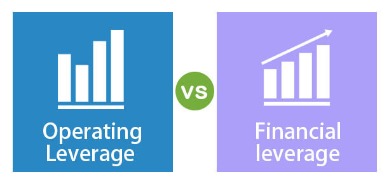
By adhering to the principles of debits and credits, businesses can accurately record and track financial transactions. In the double-entry accounting system, at least two accounting entries are required to record each financial transaction. These entries may occur in asset, liability, equity, expense, or revenue accounts. If the accounting entries are recorded without error, the aggregate balance of all accounts having Debit balances will be equal to the aggregate balance of all accounts having Credit balances.
The chart of accounts is a different category group for the financial transactions in your business and is used to generate financial statements. Double-entry accounting is a system of bookkeeping where every financial transaction is recorded in at least two accounts. A double-entry system provides a check and balance for each transaction, which helps ensure accuracy and prevent fraud.
The new set of trucks will be used in business operations and will not be sold for at least 10 years—their estimated useful life. Bookkeeping and accounting track changes in each account as a company continues operations. Our goal is to deliver the most understandable and comprehensive explanations of financial topics using simple writing complemented by helpful graphics and animation videos. For information pertaining to the registration status of 11 Financial, please contact the state securities regulators for those states in which 11 Financial maintains a registration filing. It’s now time to list and explain the three fundamental rules that apply today, all of which Luca Pacioli would undoubtedly recognize. The founding father of the double-entry system was a Franciscan monk called Luca Pacioli.
- A second popular mnemonic is DEA-LER, where DEA represents Dividend, Expenses, Assets for Debit increases, and Liabilities, Equity, Revenue for Credit increases.
- When you generate a balance sheet in double-entry bookkeeping, your liabilities and equity (net worth or “capital”) must equal assets.
- Assets, Expenses, and Drawings accounts (on the left side of the equation) have a normal balance of debit.
- These obligations arise from loans, accounts payable, accrued expenses, and other financial obligations.
- These categories help group similar accounts, making locating and recording transactions easier.
Verify that the balance reflects the correct total of all debits and credits recorded in the account. Decide whether the transaction will increase or decrease the account balances. This involves considering the specific details of the transaction, such as the purchase price, sales revenue, expenses incurred, or amounts received or paid. Equity accounts include contributed capital (common or preferred stock) and retained earnings.

Equity – The Accounting Equation: Assets, Liabilities, and Equity
For a company to keep accurate accounts, every business transaction will be represented in at least two of the accounts. Double-entry bookkeeping also facilitates financial analysis and decision-making. The structured organization of accounts and their balances allows businesses to analyze trends, track expenses, monitor revenues, and evaluate various aspects of their operations. This information empowers management to make informed decisions, plan budgets, and assess the financial implications of different options.
History of Double-Entry System of Accounting
Document management systems help businesses organize and store financial documents securely. These systems facilitate easy retrieval average pto accrual rate of invoices, receipts, and other supporting documents, ensuring proper documentation for audit purposes and compliance. Double entry accounting revolves around the idea that for every value given, there is a corresponding value received, and vice versa. Take self-paced courses to master the fundamentals of finance and connect with like-minded individuals. A financial professional will offer guidance based on the information provided and offer a no-obligation call to better understand your situation.
Debits are recorded on the left side of the entry, and credits are recorded on the right side. The chart of accounts typically consists of various categories to classify accounts based on their function or type. Common categories include assets, liabilities, equity, revenue, and expenses. These categories help group similar accounts, making locating and recording transactions easier. Accurate and transparent financial reporting is essential for regulatory compliance. Double-entry bookkeeping ensures that financial records are complete, balanced, and aligned with accounting standards and regulations.
However, you must remember the fundamental accounting principles for your business’s finances. When you generate a balance sheet in double-entry bookkeeping, your liabilities and equity (net worth or “capital”) must equal assets. For example, an e-commerce company absorption vs variable costing buys $1,000 worth of inventory on credit. Assets (the inventory account) increase by $1,000 and liabilities (accounts payable) increase by $1,000. Many companies, regardless of their size or industry, use double-entry accounting for their bookkeeping needs because it provides a more accurate depiction of their financial health.
What is a debit and what is a credit?
When a transaction occurs, it is recorded by making entries in the appropriate accounts. The debits and credits are determined based on the nature of the transaction and its impact on different accounts. For example, when a company sells goods for cash, it would debit the Cash account and credit the Sales Revenue account. Under the double entry method, every transaction is recorded in at least two accounts.
© Accounting Professor 2023. All rights reserved
Recording multiple transactions that what is a forensic accountant require both credit and debit entries can be time-consuming and lead to mistakes. It is recommended to use an accountant for your business or accounting software to ensure that all transactions are recorded correctly. For a sole proprietorship, single-entry accounting can be sufficient, but if you expect your business to keep growing, it’s a good idea to master double-entry accounting now. Double-entry accounting will allow you to have a deeper understanding of your company’s financial health, quickly catch accounting mistakes, and share a snapshot of your business with investors.

 الحصول على موعد
الحصول على موعد
اترك تعليقا